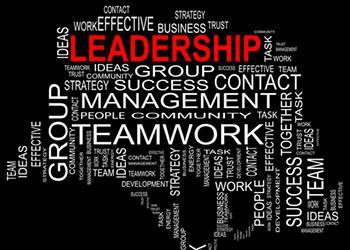Blog Series- An In-Depth Look At Common Segments Of Grant Proposals Part 4: Measurement/Outcomes And Evaluation – Are Numbers Set In Stone?
Most grant proposals are divided into sections. Each section serves a specific purpose in convincing funders that your organization is a strong match for their funding priorities, a good steward of their dollars, and is meeting a critical need in your community. This blog series will break down the grant proposal and look at each piece individually – its purpose, the message that piece conveys to the funder, and the best practices for sharing that information. We’ll look at:
- Cover Letters – What to Include and What to Leave Out
- Organization History and Background – Developing a Narrative that Appeals to Funders
- Need Statements – Making the Case for Your Organization
- Measurement/Outcomes and Evaluation – Are Numbers Set in Stone? (this post ?)
- Presentation of Budgets for Grant Applications
- Preparing Your Grant Proposal Packet for Submission
The Statement of Need and Proposal are the heart of your grant –they tug at the heartstrings and make the funder want to support your organization. But every funder receives far more requests for funding than they have the finances to support. There simply isn’t enough money to go around. A substantial part of the decision about where grant dollars will go comes down to which organization is providing the best investment opportunity. That is the question you are answering in the Measurement/Outcomes and Evaluation sections of the grant proposal.
How will you measure the successful progress and outcomes of your program? When funders ask this question, their goal is to learn what data you use to determine success and how you gather that data. The easy answer when providing measurements is to share the quantity of activities/services your organization provided. This data is easy to track – the number of meals served, children who participated, or patients served.
Measuring outcomes is messier – it takes more time, often requires tracking participants over time, and isn’t entirely within your control. Some program participants may not stay in the program long enough to measure an outcome, some may not respond to your survey after leaving the program, and others may only accomplish a portion of the change you hoped for.
Measuring program success may include:
1.Sharing the tools/tests you use to measure progress and your goal for program participants. Examples for students include your state’s Kindergarten Readiness Assessment for early childhood education programs or the SAT for secondary education. This type of measurement produces objective, quantitative data. Your organization may set a goal related to the tool/test such as:
- After implementation of the Dinosaur Curriculum, 100% of ABC Child Development Center 5 year olds will be assessed socially and emotionally “ready for kindergarten” on the Kindergarten Readiness Assessment. – The data collection tool is the Kindergarten Readiness Assessment
- Students who participate in the after school SAT preparation course will improve their test scores by at least 100 points. – The data collection tool is the SAT
If you use this type of quantitative data, you need to refer to the impact of these metrics in other sections of the grant. Funders need to understand why it is important for students to be socially and emotionally “ready for kindergarten” or how improving the SAT score by 100 points influences a high school student’s college application.
2. Tracking your organization’s progress in completing the tasks laid out in the grant proposal. Remember: don’t just track your organization’s activities. Show the funder how their support and your organization’s activities directly impact outcomes for your participants.
- On end-of-season surveys, kitchen staff will indicate meal preparation time decreased by at least 20% after installation of new stoves, cooking range, griddle, and food processor. – Data collection tool is the end-of-season survey of staff members; funded item is the new kitchen equipment.
- Educators report 80% of students demonstrated comprehension of science modules covered during their visit to new exhibits at the Museum of Arts and Sciences. – Data collection tool is the educator survey; funded items are the new exhibits.
3. Tracking your participants’ progress in achieving the goals laid out in the grant proposal without using a formal tool/test. Participant-centered outcomes focus on measurable outcomes in the lives of those you serve. These measurements demonstrate meaningful change that has long-term value for the individual or community, and this phrasing can maximize the impact of your grant proposal.
- 25 families will obtain and retain housing that meets their full cost of living and accessibility needs. – Data collection tool would be a client exit survey and a client follow-up survey to ensure the “retain” standard is met.
- 80% of employment services clients will obtain a position that is sufficient to meet their basic household needs. 75% of employment services clients who obtain a position will remain employed after one year. – Data collection tool for the first goal would be a client exit survey. Data collection tool for the second goal could be a client or employer follow-up survey.
How will your organization evaluate the success of your program? When funders ask this question, they want to know if you actively seek feedback about your programs and services from various constituents. Other phrasing of this question may include:
- How does your organization conduct qualitative evaluations?
- How does your organization share stories, successes, or lessons learned?
Funders want to know that your organization leadership is actively listening. Responses to this question should include multiple sources of program evaluation including:
1.Constituent Feedback – End-of-season evaluations, annual program surveys, exit surveys, workshop evaluations – every program and service you provide should include a way to collect feedback from your constituents. Evaluations should include opportunities for constituents to answer questions like:
- What went well, and what areas of the program/service could be improved?
- Did the program/service help you make progress toward the defined goals the organization has established? (i.e. did the client obtain a job that meets his/her household needs?)
- Did the program/service meet your need(s)?
- What programs/services could the organization offer to better support clients in the future?
2. Employee Feedback – Your staff team is critical to the success of your program/service. They are the ones in the classroom, working with the animals, preparing the meals, sitting in meetings with clients, or doing the specific tasks of your organization. You need to know if they are happy in their jobs, if they have the proper training and support to do their work, and if your constituents are giving them feedback that aligns with your program goals.
- What aspects of programs/services are running well, and what areas could be improved?
- Did you receive sufficient training to do your job? Did you have sufficient support from administration/supervisors to do your job?
- What is the greatest challenge to successfully serving clients in your position?
- How could our organization do more to accomplish our mission and meet the needs of our clients?
3. Volunteer Feedback – Volunteers are a wonderful asset for nonprofit organizations. They may supplement your workforce, complete needed repairs and maintenance on your facilities, or raise needed funds for your organization. Seek feedback from your volunteers to learn about their experience, encourage them to return, and maximize your ability to engage more volunteers in the future. The same questions raised above apply to volunteers.
4. Escalation of Concerns – We all hope that programs run smoothly, but challenges are part of program management. When you write about evaluation in grants, include a statement about how your organization addresses concerns raised by participants or employees outside the evaluation process. Active listening and engagement should be a continual process in your organization. Funders want to know that organizations will take action to address challenges immediately and integrate new policies, procedures, or practices based on what they learned from those challenges.
What happens if we don’t hit our numbers from a grant application?
This is one of the most common questions I hear from clients when we are writing grant applications. Putting the goal down it writing seems to set it in stone. This is a myth. Much like a budget, the outcome measures in a grant proposal are a forecast. They are your best guess at what your program will achieve with sufficient funding. That does not mean every outcome measure will hit the goal.
When writing outcome measures, it’s important to set your goals based on previous experience at your organization. At the start of the grant year, you should expect the program to hit the goal. However, if the program doesn’t hit the goal, you need to provide the funder with an explanation in your grant report. For example:
If you currently have 100 children in your after school program and 25 of them are in a literacy program, you can forecast based on existing numbers and costs that a grant of $10,000 for a second literacy coach will allow 20 more kids to participate in the literacy program. Your outcome measure forecasts improved reading levels for 90% of the kids in the entire program, but only 80% of the kids hit the goal.
When you write your final report to the funder, you need to provide an explanation for why you didn’t hit the target – it’s possible the new literacy coach didn’t start as quickly as anticipated, maybe it was a really snowy winter and your program was cancelled more days than anticipated, or perhaps there was a higher rate of student turnover in the program this year. Provide a reasonable explanation for the variance, and the funder is unlikely to raise an issue with your grant report.
If you know far in advance that you won’t meet the outcome measure, contact the funder. This is a common issue with capital campaigns. Your organization may not reach the financial goals of the campaign and need to delay building or change the plan. Contact the funder to discuss the new plan. Most funders that commit funds for capital campaigns are willing to make adjustments in these situations.
The Measurement/Outcomes and Evaluation sections of the grant proposal are your opportunity to convince the funder that each dollar has a substantial impact on your constituents, and that you keep track of that impact through both qualitative (evaluation) and quantitative (outcome measures) feedback.











